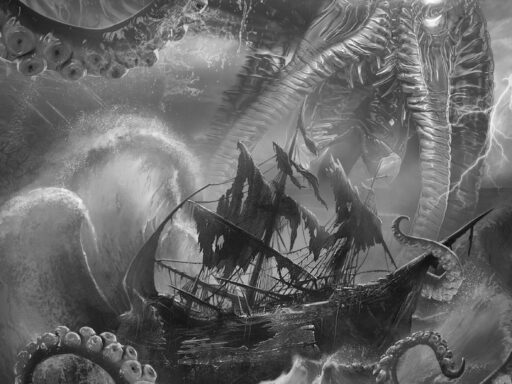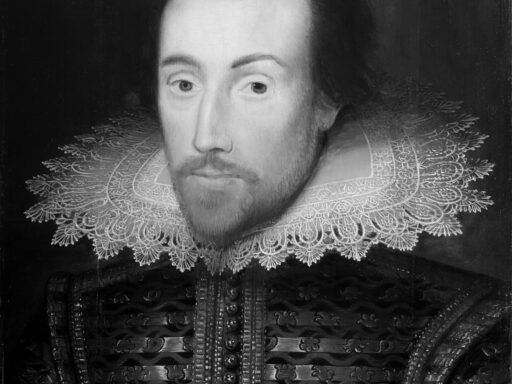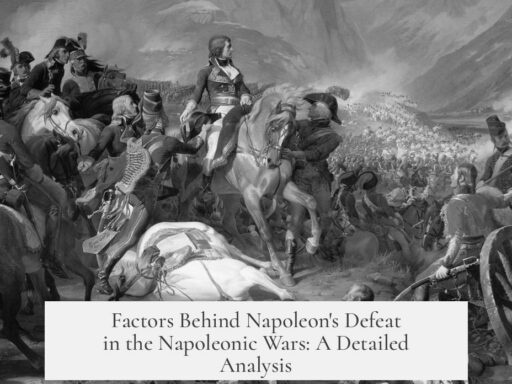Joseph Campbell’s claim that most myths and stories across history follow a single pattern known as the Hero’s Journey is widely disputed and considered inaccurate by many scholars. The idea that a vast majority of myths can be simplified into this monomyth is seen as overly reductive. It often erases cultural uniqueness and forces diverse narratives into one vague template. This limits the true complexity and meaning of those myths.
The Hero’s Journey is sometimes described as a Procrustean theory. This term refers to a rigid pattern that myths are forced to fit, regardless of their actual content. Campbell’s structure consists of stages like “call to adventure,” “threshold crossing,” “ordeal,” and “return.” Critics argue that these stages are arbitrarily selected and applied by cherry-picking examples, rather than being derived from the myths themselves.
One major criticism is that the Hero’s Journey promotes a “Great Man” view of storytelling. It centers an individual hero and reduces other characters to supporting roles, often ignoring broader social or cultural contexts. Myths are often ensemble stories with multiple important figures or communal themes, which Campbell’s model overlooks.
Culturally, however, Campbell’s Hero’s Journey has been highly influential. It profoundly shaped modern fiction, including iconic characters like Luke Skywalker, Frodo Baggins, and stories in the Marvel Cinematic Universe. Even works that challenge Campbell’s ideas borrow from the monomyth template. Yet this cultural productivity does not translate to an accurate understanding of ancient myths.
| Aspect | Hero’s Journey | Actual Myths |
|---|---|---|
| Universality | Claimed to be universal. | Often culture-specific, with unique features. |
| Focus | Individual hero’s adventure. | Ensemble casts or communal themes. |
| Method | Cherry-picks fitting stories. | Study of distinct details and motifs. |
| Interpretation | Prescriptive pattern. | Analytical tool to highlight uniqueness. |
Comparisons with other folklore research help illustrate these differences. Vladimir Propp’s Morphology of the Folktale (1928) identifies recurring functions in Russian folktales without claiming universality. Propp emphasizes that his model emerges from a specific cultural corpus and highlights the importance of story details, rather than erasing them.
Critics point out that important ancient myths defy Campbell’s pattern. For example, Hesiod’s Theogony, a foundational Greek myth, contains no clear hero’s journey elements such as a call to adventure or triumphant return. The Iliad features multiple significant figures and an anti-heroic protagonist, Achilleus, who rejects the traditional hero’s call. The Hymn to Demeter focuses largely on Demeter’s community and social values, rather than a singular heroic quest.
Additionally, Campbell’s concept demonstrates biases: it frames the hero as male and often assumes a sexual union motif which is alien to many myths. The appropriation of diverse myths into a single “monomyth” also results in what some describe as Campbellian imperialism—in which diverse cultural stories are normalized and sanitized to fit Western narrative expectations.
The Hero’s Journey is not a reliable through-line in storytelling throughout history across societies or cultures. It serves more as a popular narrative framework for contemporary storytelling than a genuine universal pattern of myth. While it offers a simplified lens for some narratives, it inadequately reflects the diversity and complexity that real myths exhibit.
- The Hero’s Journey is overly vague and erases cultural specificity.
- It imposes a narrow “heroic individual” perspective on myths often emphasizing communities or ensembles.
- Many foundational myths do not fit the monomyth’s stages.
- Propp’s methodology better respects cultural uniqueness and is less prescriptive.
- The monomyth is influential in modern fiction, but less useful for scholarly myth analysis.
- The model reflects inherent cultural biases and can act as a form of cultural imperialism.
How accurate is Joseph Campbell‘s claim that the vast majority of all myths/stories from history can be boiled down to following the Hero’s Journey? Is the Hero’s Journey really a through-line in storytelling throughout history, regardless of society or culture?
Joseph Campbell’s claim that most myths and stories can be boiled down to the Hero’s Journey isn’t as accurate as you might think. In fact, this idea is more problematic than helpful when it comes to understanding real myths from various cultures. Let’s unpack why this popular notion is deeply flawed, yet culturally influential.
First off, Campbell’s Hero’s Journey is often treated like a golden key to every story ever told—a universal recipe. But this theory ends up cutting out the rich detail and unique qualities of those stories. It’s like using a cookie cutter on a patchwork quilt and expecting it to stay intact. The broad strokes Campbell paints are so vague that they erase the cultural, racial, and gender nuances that make myths memorable and meaningful.
Why is the Hero’s Journey so misleading?
Lots of scholars argue that the Hero’s Journey is just plain wrong—and even harmful. It oversimplifies complex myths by fitting them into a one-size-fits-all mold that reflects a very narrow idea of what a “hero” means. The theory tends to idolize a single “great man,” sidelining other characters as mere background props. This is a storytelling approach more in line with the old “Great Man Theory” of history than the varied and rich tapestry myths actually represent.
“The Hero’s Journey is actually a thought-ending device, designed to erase difference and detail.”
Spencer McDaniel, a noted critic, famously called the Hero’s Journey “Procrustean,” referencing a myth where a giant forced people to fit a specific bed—strong metaphor for how Campbell forces myths into his neat stages without respecting their original form.
The cherry-picking problem
Campbell picks and chooses story elements that fit his model, ignoring or minimizing those that don’t. If you tried this stunt with any other pattern, you’d get a similar “universal story.” What this really says is more about Campbell’s interests than about all global myths.
For example, Campbell highlights the journey of Luke Skywalker or Frodo Baggins as perfect hero examples. But these are modern fictional characters explicitly crafted with Campbell’s model in mind. It’s a feedback loop, not a proof of historical universality.
Let’s compare with Propp’s approach
Vladimir Propp’s Morphology of the Folktale (1928) is a more nuanced tool for myth analysis. Unlike Campbell, Propp understood that his structure emerged from a very specific set of Russian folktales. He didn’t claim universality. He was interested in what made those stories unique. The details mattered.
That’s a sharp contrast to Campbell’s blurry broad brush. Where Propp celebrates differences, Campbell imposes sameness.
Reading ancient Greek myths through Campbell’s lens
Wondering how some of the most famous myths hold up under Campbell’s microscope? Spoiler: not well.
- Theogony: This foundational Greek myth doesn’t show a hero “venturing forth” or meeting a “threshold guardian.” In fact, there’s no traditional hero at all, which scrambles Campbell’s framework from the start.
- The Iliad: Rather than focusing on one hero’s journey, this epic is an ensemble drama. Achilleus, often cited as the hero, refuses the “call” for adventure during much of the story and stays mostly out of action. No return, no apotheosis, no temptress. It just doesn’t fit Campbell’s template.
- Hymn to Demeter: Here the main story is about community and shared values, not individual heroism. Persephone’s story is complicated and doesn’t follow the “flight” or “boon” phases. Plus, Campbell’s hero is always male, which doesn’t hold up here: Demeter (the goddess-mother figure) doesn’t engage in any sexual union or enlightenment typical of Campbell’s outline. It’s a myth about community, not a heroic individual.
Campbellian imperialism and cultural flattening
The Hero’s Journey is sometimes called “Campbellian imperialism.” What does that mean? Campbell borrows from cultures he’s fascinated by, often disparaging their source material as “dreamlike mumbo jumbo” or “bizarre fairy tales,” then normalizes them into his monomyth. The original cultural context gets flattened and sanitized to fit a comfortable narrative for a Western audience.
This approach enforces dominant cultural norms and erases differences that deserve preservation and respect.
But if it’s so flawed, why is it still popular?
Here’s the twist: the Hero’s Journey has been wildly influential and culturally productive in modern storytelling. It’s impossible to ignore how much it’s shaped major stories—Frodo, Luke, Paul Atreides, even The Matrix. Writers find a useful blueprint in Campbell’s cycle for building dramatic tension and character growth.
So while it’s inaccurate as a universal theory of myths, it’s become an invaluable tool for fiction writing. That usefulness doesn’t validate it as a scholarly explanation of historical myths, though.
What should serious myth lovers do instead?
If you want to understand myths deeply, don’t rely on Campbell alone. Go for approaches like Propp’s: respect the unique cultural context, pay attention to details, and never force stories into a preset mold.
Ask yourself: what makes THIS myth special? What are its distinct characters, values, and worldview? How does the story reflect the society it comes from rather than some universal hero template?
Remember, not every story fits a heroic mold. Some myths celebrate entire communities, others explore gods, or abstract ideas like fate and justice. Not all heroes wield swords—and sometimes the “hero” isn’t even a hero in the traditional sense.
So, ___is the Hero’s Journey a universal storytelling through-line?___
No, it is not a truly universal structure in global myth-making. It is a culturally specific framework that simplifies and distorts the rich, varied world of human storytelling. It works better as a creative tool than as a scholarly summary.
Myths are complex, layered, and resistant to simple formulas. They demand we listen carefully, respecting their details and cultural roots, instead of forcing them into a bullet-point journey.
What do you think? Does your favorite myth fit Campbell’s monomyth, or does it break the mold? Maybe we all need to embrace more messy, diverse journeys in storytelling.


